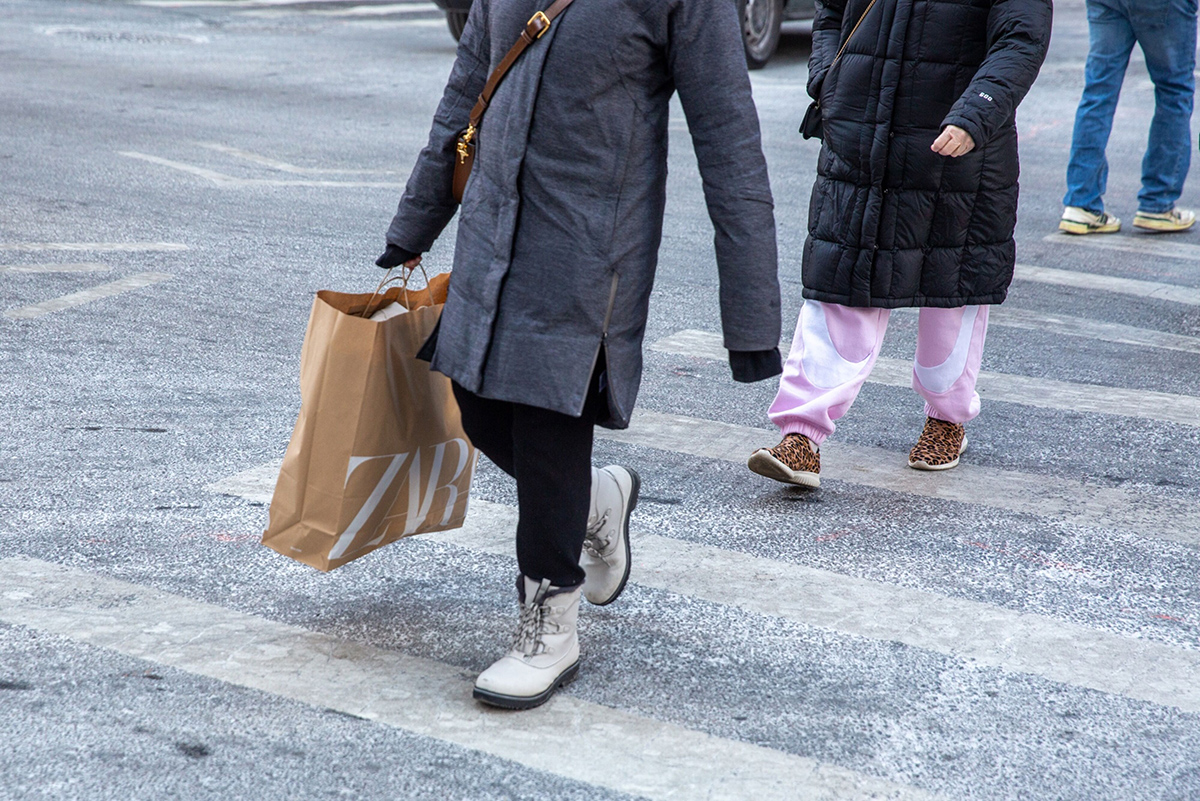 A shopper carries a Zara bag in the Soho neighborhood of New York City on January 22, 2024. Photographer: Shelby Knowles/Bloomberg.
A shopper carries a Zara bag in the Soho neighborhood of New York City on January 22, 2024. Photographer: Shelby Knowles/Bloomberg.
U.S. retail sales rose by less than forecast after a steep drop to start the year, underscoring concerns about the durability of consumer spending.
The value of retail purchases, unadjusted for inflation, increased 0.6 percent from January after a downward revision to the prior month, Commerce Department data showed Thursday. Excluding cars, sales advanced 0.3 percent.
Recommended For You

Eight out of 13 categories posted increases, led by building-materials stores and auto dealers, which rose by the most since May. Spending fell at furniture outlets, as well as stores for health and personal care, clothing, and e-commerce.
So-called "control-group sales," which are used to calculate gross domestic product (GDP), were unchanged in February after falling in the prior month. The measure—which excludes food services, auto dealers, building-materials stores, and gas stations—suggests weaker economic activity so far in the first quarter.
Under the surface, Thursday's report points to a consumer who's growing more discerning as the labor market starts to cool somewhat, credit access becomes more limited, and higher prices continue to bite.
Even so, a separate report Thursday showed applications for unemployment benefits remained historically low last week and were even lower than initially reported last year after revisions. A strong labor market, as well as stubborn inflation, have been cited by the Federal Reserve as reasons to leave interest rates unchanged for a fifth straight meeting when officials gather next week.
| Metric | Actual | Estimate |
|---|---|---|
| Retail sales (month-over-month) | +0.6% | +0.8% |
| Sales excluding autos & gas (month-over-month) | +0.3% | +0.3% |
| 'Control group' sales (month-over-month) | +0.0% | +0.4% |
The Fed's recent Beige Book survey of regional business contacts indicated shoppers are increasingly becoming more sensitive to prices. Other data this week showed consumer and producer prices topped forecasts for a second month in February, reflecting rising costs for goods after months of declines.
Even though inflation progress is moving sideways at the moment, most economists and executives expect price pressures to continue retreating, which could help support spending in the near term.
"Disinflation is the word of the quarter in retail. That's a good thing for the consumer," Michael Fiddelke, Target Corp.'s COO and interim CFO, said during the company's earnings call last week.
What Bloomberg Economists Say…
"Other aspects of the print showed only moderate improvement. That's further evidence that consumers are running out of spending runway as they exhaust their savings and remain cautious about borrowing with interest rates still high."
— Estelle Ou
The retail figures largely reflect purchases of merchandise, which comprise a relatively narrow share of overall consumer outlays. Data due later this month will provide more details on inflation-adjusted spending on goods and services in February.
Thursday's figures showed purchases made at restaurants and bars—the only service-sector category in the report—rebounded after two months of decreases. Receipts at grocery stores fell for a third month.
© Touchpoint Markets, All Rights Reserved. Request academic re-use from www.copyright.com. All other uses, submit a request to [email protected]. For more inforrmation visit Asset & Logo Licensing.



